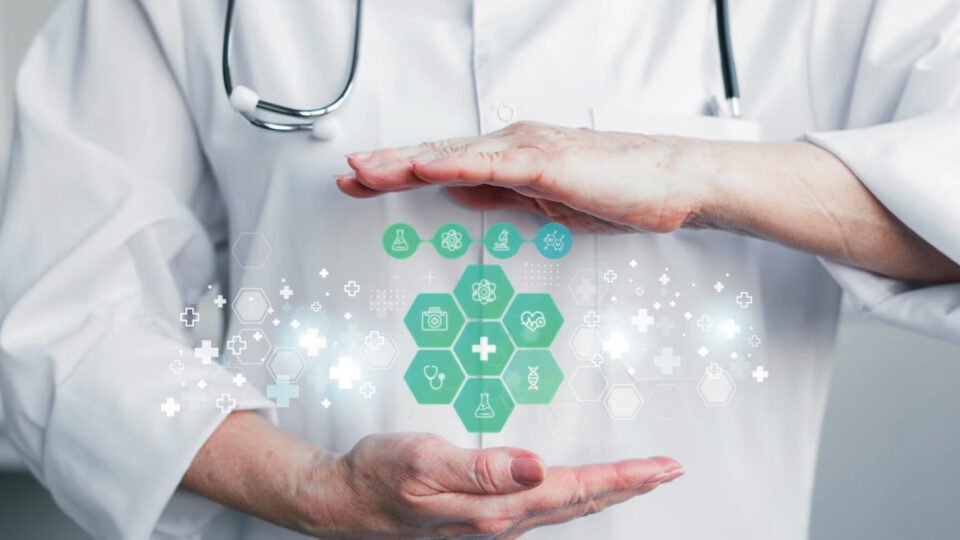Burnout, be gone! AI in medical imaging boosts precision, eases workload, and transforms care delivery.
The healthcare sector has been in crisis and is still in crisis. Cases of burnout among physicians and medical staff are alarming as a result of an increase in complex medical processes, an aging population, as well as a shortage of healthcare professionals, doctors, and medical staff. According to a study carried out by Medscape in 2020, over 42 percent of doctors said they had burnout, and 58 percent of them named too much workload as the most significant factor. Such a burnout is not only a problem in the quality of care of patients, but it also leads to a lack of job satisfaction and the risk of medical errors.
To get out of this crisis, one must accelerate the healthcare sector on the back of new technology, and artificial intelligence (AI) seems to be the answer. AI can help medical practitioners to work more efficiently and productively, and do things that which is either too complex or time-consuming for them. In particular, medical imaging, which is an important part of modern healthcare, can be transformed by the use of AI.
One of the most vital areas that has led to this increase is medical imaging, which has AI algorithms to decode photos and assist physicians in diagnosis and treatment planning. As a matter of fact, a study published by The Lancet Digital Health found that the diagnosis of certain medical conditions by the use of AI was more accurate than that of human doctors.
Since it has the potential of making patient outcomes more favorable, decreasing the workload, and lessening physician burnout, AI in medical imaging is a promising and fast-growing domain. This paper will discuss how artificial intelligence is changing medical diagnosis and treatment with particular reference to its developments in medical imaging.
Embracing AI: Why Now Is the Time for Medical Imaging
In the past, medical imaging has relied on body or other medical workers to interpret and analyze images. This is, however, a process that may be time-consuming and prone to error. However, AI has turned medical imaging into an automated process, which is faster and more accurate. AI will also benefit the medical workers by finding anomalies and providing them with decision support and resulting in improved patient outcomes.
According to a report done by Pure Storage, the use of such AI in medical imaging is probably to skyrocket in the following years, with the growth of big data, enhancement in computing power, and to fill the hole of the decrease in the number of physicians as catalysts. As a matter of fact, the report predicts that the global AI in medical imaging market will reach the following value by 2026: 2.2 billion dollars.
With great precision, artificial intelligence algorithms look at medical images and recognize patterns that could be difficult to detect by human specialists. An example here is that AI can help to detect early symptoms of diseases like cancer, which means they will be diagnosed earlier and treated then. AI can also be used in the forecasting of outcomes of patients and the identification of patients who may be having high probabilities of developing a particular condition.
Among the strongest benefits of AI in medical imaging, one might mention, it can take away the automatable routine, enabling healthcare specialists to focus on the more complex cases. Not only will this increase efficiency, but it will also help reduce the pressure on medical workers, which will eventually end with the elimination of physician burnout and challenges that the medical sector is facing currently.
One more direction where AI in medical imaging holds potential is developing personalized treatment plans. The use of AI helps to create a completely customized process of treatment related to the individual patient, which results in a significant increase in the effectiveness of treatment and a decrease in cost.
This is not only driving the future of the medical imaging industry but also transformational in the changing nature of the health care sector and even work workplace. How? Let’s see.
How is AI Disrupting the Healthcare Workforce?
With diagnosing being one of the potential applications of AI use in healthcare, a report prepared by McKinsey illustrates how AI implementation in the field could dramatically transform the work of healthcare practitioners. It will also introduce new professions in the medical world, including data analysts and AI specialists, whose duty will be to create and establish AI algorithms and tools. Also, the healthcare industry will have to train its workers to collaborate with AI tools and systems, including how to process and use AI-derived knowledge to enhance patient care.
Incorporation of AI in healthcare will also mean alteration of healthcare professionals’ training. Medical schools and other healthcare training programs will have to introduce AI training into their program to make sure that the doctors of tomorrow are trained to work with AI in harmony with these technologies.
The second possible effect of AI in the healthcare workforce is the alleviation of the shortage of physicians. AI technologies will also be able to automate routine workload, reducing pressure on medical personnel and allowing them to attend to more patients. Moreover, AI may help healthcare experts in making the process of diagnosis and choices about treatment faster and more precise by offering them decision support.
Wrapping Up
Hence, the implementation of AI technologies in healthcare is significantly changing the healthcare workforce, making healthcare professionals increase their skills and assume new positions. Although struggles of such a shift may exist, application of AI in health can ease patient outcomes, alleviate physician burnout, and eventually enhance a more effective and efficient healthcare system.
Explore AITechPark for the latest advancements in AI, IOT, Cybersecurity, AITech News, and insightful updates from industry experts!

